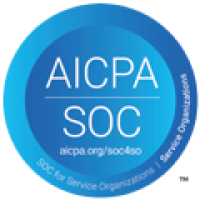-png.png?width=1440&height=720&name=How%20to%20use%20GLM-4-6%20API%20(1)-png.png)
Zhipu AI released GLM-4.6, the newest model in its General Language Model (GLM) series. Unlike many proprietary frontier systems, the GLM family remains open-weight and is licensed under permissive terms such as MIT and Apache, making it one of the only frontier-scale models that organizations can self-host.
GLM-4.6 builds on the reasoning and coding strengths of GLM-4.5 and introduces several major upgrades.
The context window expands from 128k to 200k tokens, enabling the model to process entire books, codebases or multi-document analysis tasks in a single pass.
It retains the Mixture-of-Experts architecture with 355 billion total parameters and roughly 32 billion active per token, but improves reasoning quality, coding accuracy and tool-calling reliability.
A new thinking mode improves multi-step reasoning and complex planning.
The model supports native tool calls, allowing it to decide when to invoke external functions or services.
All weights and code are openly available, allowing self-hosting, fine-tuning and enterprise customization.
These upgrades make GLM-4.6 a strong open alternative for developers who need high-performance coding assistance, long-context analysis and agentic workflows.
GLM-4.6 is built on a Mixture-of-Experts (MoE) Transformer architecture. Although the full model contains 355 billion parameters, only around 32 billion are active per forward pass due to sparse expert routing. A gating network selects the appropriate experts for each token, reducing compute overhead while preserving the benefits of a large parameter pool.
Key architectural features carried over from GLM-4.5 and refined in version 4.6 include:
Grouped Query Attention, which improves long-range interactions by using a large number of attention heads and partial RoPE for efficient scaling.
QK-Norm, which stabilizes attention logits by normalizing query–key interactions.
The Muon optimizer, which allows larger batch sizes and faster convergence.
A Multi-Token Prediction head, which predicts multiple tokens per step and enhances the performance of the model’s thinking mode.
GLM-4.6 supports two reasoning modes.
The standard mode provides fast responses for everyday interactions.
The thinking mode slows down decoding, uses the MTP head for multi-token planning and generates internal chain-of-thought. This mode improves performance on logic problems, longer coding tasks and multi-step agentic workflows.
One of the most important upgrades is the expanded context window. Moving from 128k tokens to 200k tokens allows GLM-4.6 to process large codebases, full legal documents, long transcripts or multi-chapter content without chunking. This capability is particularly valuable for engineering tasks, research analysis and long-form summarization.
Zhipu AI has not disclosed the full training dataset, but GLM-4.6 builds on the foundation of GLM-4.5, which was pre-trained on trillions of diverse tokens and then fine-tuned heavily on code, reasoning and alignment tasks. Reinforcement learning strengthens its coding accuracy, reasoning quality and tool-usage reliability. GLM-4.6 appears to include additional data for tool-calling and agentic workflows, given its improved planning abilities.
GLM-4.6 is designed to function as the control system for autonomous agents. It supports structured function calling and decides when to invoke tools based on context. Its internal reasoning improves argument validation, error rejection and multi-tool planning. In coding-assistant evaluations, GLM-4.6 achieves high tool-call success rates and approaches the performance of top proprietary models.
Although GLM-4.6 is large, its MoE architecture keeps active parameters manageable. Public weights are available in BF16 and FP32, and community quantizations in 4- to 8-bit formats allow the model to run on more affordable GPUs. It is compatible with common inference frameworks such as vLLM, SGLang and LMDeploy, giving teams flexible deployment options.
Zhipu AI evaluated GLM-4.6 on a range of benchmarks covering reasoning, coding and agentic tasks. Across most categories, it shows consistent improvements over GLM-4.5 and competitive performance against high-end proprietary models such as Claude Sonnet 4.
In real-world coding evaluations, GLM-4.6 achieved near-parity results with proprietary models while using fewer tokens per task. It also demonstrates improved performance in tool-augmented reasoning and multi-turn coding workflows, making it one of the strongest open models currently available.

GLM-4.6 is released under permissive licenses such as MIT and Apache, allowing unrestricted commercial use, self-hosting and fine-tuning. Developers can download both base and instruct versions and integrate them into their own infrastructure. This openness stands in contrast to proprietary models like Claude and GPT, which can only be used through paid APIs.
GLM-4.6 is available on the Clarifai Platform, and you can access it via API using the OpenAI-compatible endpoint.
Sign up, and generate a Personal Access Token. You can also test GLM-4.6 in the Clarifai Playground by selecting the model and trying coding, reasoning or agentic prompts.
You can also access GLM 4.6 through the API using other languages like Node.js and cURL. Check out all the examples here.
GLM-4.6 shows strong improvements in code generation accuracy and efficiency. It produces high-quality code while using fewer tokens than GLM-4.5. In human-rated evaluations, its coding ability approaches that of proprietary frontier models. This makes it suitable for full-stack development assistants, automated code review, bug-fixing agents and repository-level analysis.
GLM-4.6 is built for tool-augmented reasoning. It can plan multi-step tasks, call external APIs, check results and maintain state across interactions. This enables autonomous coding agents, research assistants and complex workflow automation systems that rely on structured tool calls.
With a 200k-token window, the model can read and reason over entire books, legal documents, technical manuals or multi-hour transcripts. It supports compliance review, multi-document synthesis, long-form summarization and codebase understanding.
The model is trained on both Chinese and English and delivers strong performance in bilingual tasks. It is useful for translation, localization, bilingual code documentation and creative writing tasks that require natural style and voice.
Thanks to its open license and flexible MoE architecture, organizations can self-host GLM-4.6 on private clusters, fine-tune on proprietary data and integrate it with their internal tools. Community quantizations also enable lighter deployments on limited hardware. Clarifai provides an alternative cloud-hosted pathway for teams that want API access without managing infrastructure.
GLM-4.6 is a major milestone in open AI development. It combines a large MoE architecture, a 200k-token context window, hybrid reasoning modes and native tool-calling to deliver performance that rivals proprietary frontier models. It improves on GLM-4.5 across coding, reasoning and tool-augmented tasks while remaining fully open and self-hostable.
Whether you are building autonomous coding agents, analyzing large document sets or orchestrating complex multi-tool workflows, GLM-4.6 provides a flexible, high-performance foundation without vendor lock-in.

Developer advocate specialized in Machine learning. Summanth work at Clarifai, where he helps developers to get the most out of their ML efforts. He usually writes about Compute orchestration, Computer vision and new trends on AI and technology.
Developer advocate specialized in Machine learning. Summanth work at Clarifai, where he helps developers to get the most out of their ML efforts. He usually writes about Compute orchestration, Computer vision and new trends on AI and technology.
© 2023 Clarifai, Inc. Terms of Service Content TakedownPrivacy Policy






© 2023 Clarifai, Inc. Terms of Service Content TakedownPrivacy Policy